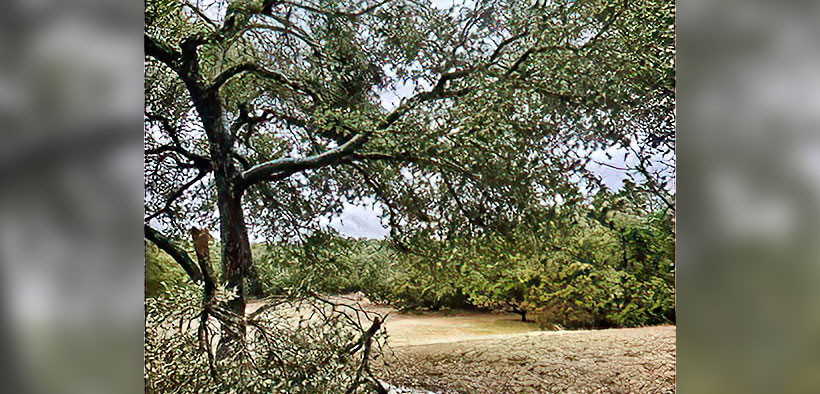Texas A&M Forest Service warns homeowners to wait until all ice melts to assess damage to trees and homes.
Although ice is starting to melt, it can fall off in chunks and become dangerous.
Wait until temperatures gradually warm before making a full assessment about trees, advises Erin Davis, a forester with Texas A&M Forest Service.
“While your trees might look bent and broken now, they could very well perk back up in the coming days,” she said. “Have patience with your trees, as you cannot assess the full scope of damage until new leaves grow in the spring.”
When primary branches are ripped from the trunk, as they did on many trees this week, the bark beneath the branch will often get torn.
Where limbs have broken, make proper pruning cuts just to the outside of a branch collar, where possible.
“Use a chisel or sharp knife to smooth the edges where bark has been torn away,” Davis said. “This allows the tree to heal faster and prevents bugs, fungi and disease.”
On Facebook, she said once ice has melted, chisel sooner rather than later.
“If an oak tree, as it warms up, make as few pruning cuts as possible and paint all cuts,” she said.
Hire a certified arborist for larger and high limbs.
This avoids oak wilt.
Prepare Young, Newly Planted Trees for the Next Frost
According to information on the Forest Service’s website, harsh conditions like cold winds, bright sun, ice, snow and frost can “pack a punch” to Texas trees.
To protect young and newly planted trees from future winter damage, Mac Martin, an urban forester, offers these tips for homeowners:
- Water helps insulate both trees and soil. Most soil will be warmer, and a well-watered tree is less susceptible to freeze damage. If a hard freeze is forecasted and soil moisture is low, water the tree before temperatures fall below freezing.
- Mulch is a simple and inexpensive way to winterize a young or newly planted tree. In addition to providing a barrier of protection against wind, freezing temperatures and frost, mulching trees helps retain heat from the soil. Repeated freezing and thawing of the soil can cause soil to expand and contract, which can cause root damage. Mulch acts as an insulator, preventing cold air from penetrating the root zone of newly planted trees, and keeps soil temperatures higher. A two- to three-inch layer of mulch should be spread around the base of the trees, at least the width of the root ball. Keep the mulch two inches away from the tree trunk.
- Wrapping avoids sun damage on cold winter days. The sun heats up the tree bark, stimulating activity. When passing clouds block the sun, temperatures drop rapidly, damaging or killing active tissue. The resulting damage is called sunscald. Wrap the bark of susceptible trees in late fall using tree-wrap tape, plastic tree guards of similar light-colored material. Remove after the last frost to avoid insects living under the material during the summer.
- Winter, the dormant season, is the best time to prune trees. Young or newly planted trees may require some pruning to train growth away from conflicts. Most light pruning or pruning that removes dead, damaged, weak or diseased limbs can be done at any time of the year with little effect on the tree. But if live tissue is to be removed, wait until mid- to late winter. Generally, wound closure is maximized if pruning takes place before the flush of spring growth. Heavy pruning of live tissue just after the spring flush should be avoided, especially on weak trees.
For more information about proper pruning or to find a certified arborist, click here.




